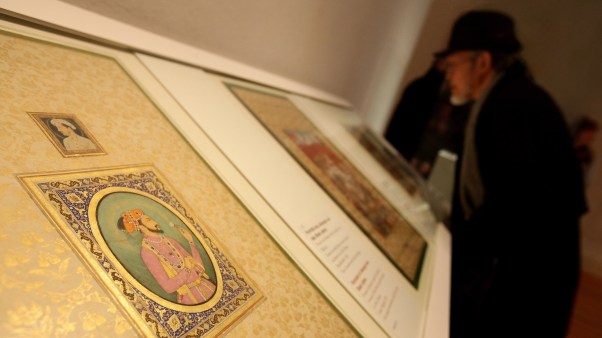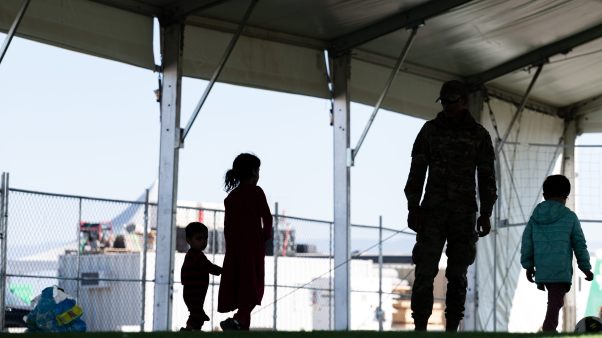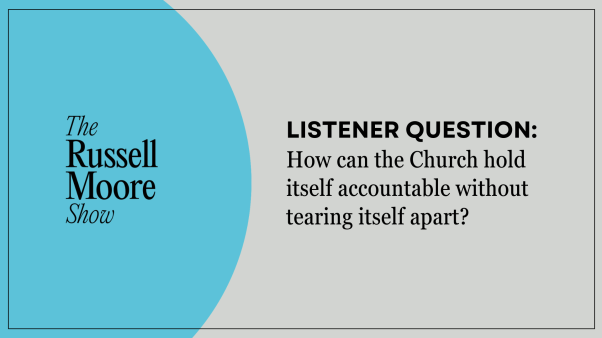Building temples and starting summer camps, Hindus step into the American cultural mainstream.
A century after Swami Vivekananda popularized Hinduism in “Christian America” during the Chicago World’s Fair in 1893 at the Parliament of the World’s Religions, his spiritual descendants on U.S. soil have grown into a significant minority whose influence extends far beyond their actual numbers.
Whether they will continue to change the increasingly pluralistic American society, or be changed by the evangelical Christians in it, is unclear. Yet, with a second parliament scheduled for this August and September in Chicago, the Hindus appear to have gained momentum, both numerically and ideologically.
“Because of immigrations from Asian countries, a current fascination with Eastern mysticism among many of this country’s spiritual seekers, and the influence of the New Age movement, Hinduism is likely to maintain a steady growth into the next century,” says veteran religion writer Russell Chandler in his 1992 book Racing Toward 2001.
Terry Muck, author of Those Other Religions in Your Neighborhood, said, “There is some Hindu influence on our culture. There are a lot more natives of India here now than ever before, and they’ve brought their religion with them—and so you have the growth of what you could call ‘temple Hinduism.’ ”
Dramatic increases
According to the 1990 Census, the number of Asian Indians in the U.S. (not all of them Hindus) jumped 125.3 percent during the 1980s, from 361,531 to 815,447, to about 0.3 percent of the nation’s people. The mushrooming of Hindu temples has been even more dramatic. In his 1992 book Religious Bodies in the United States, J. Gordon Melton counts one Hindu intrafaith organization (the Vishwa Hindu Parishad), 105 Hindu centers, temple associations, and organizations, 81 Hindu temples, and 53 Hindu periodicals. This does not count such Hindu-influenced spinoffs as the Theosophical Society. Palaniswami, a Hindu monk living in Hawaii and editor of the monthly international English-language newspaper Hinduism Today, says there are more than 100 completed Hindu temples in the U.S., up from about 10 just two decades ago.
Diana Eck, professor of comparative religion and Indian studies at Harvard University and for eight years chair of the World Council of Churches Working Group on Dialogue with People of Living Faiths, notes that Asian Indians flocked to the U.S. following passage of the Immigration Act of 1965, which eliminated the old national-origin quotas. Most, she says, are first-generation suburban professionals who do not fit the stereotypical Hindu group in America, the International Society for Krishna Consciousness, or Hare Krishnas.
“I think in many [American] churches, there was a certain amount of concern about whether their sons or daughters were becoming Hare Krishnas,” Eck said. “And in the meantime, no one noticed that their surgeon was now a Hindu.”
With the immigration of their family members to join them, however, the middle-class nature of Hinduism in the U.S. has been somewhat diluted. Definitive numbers, though, are hard to come by.
“We don’t really have any idea who’s here anymore,” Eck said. “We don’t take any notice of religion on census statistics, and, as a result, we don’t have a very accurate sense of who our neighbors are.”
Missions researcher and statistician David Barrett estimates there are 1,269,000 Hindus in North America (1 million in the U.S., 200,000 in Canada, and the rest in Bermuda). The U.S.-born Palaniswami, who, as a young man, became a monk after his initiation in Sri Lanka 26 years ago, counts 600,000 to 800,000 “born Hindus” in America, many of whom are affluent immigrants from India, plus a million more “practicing Hindus … people who are following a guru, people who have been to India and undertaken the Hindu path of dharma [knowledge of God] as their way, people who are in yoga schools or ashrams around the country, of which there are hundreds.”
Hindu renaissance claimed
Hindus who have come to this country and have become established are also finding new meaning in their faith, part of what Palaniswami has called a worldwide “Hindu Renaissance.” Hinduism Today, part of that renaissance, was founded in 1979 by the California-born guru Sivayasuvramunayaswami and is part of a larger institution called the Himalayan Academy, headquartered in Concord, California, with campuses in the U.S., Malaysia, Mauritius, South Africa, and Sri Lanka.
Palaniswami said the newspaper’s purpose is twofold: to be a vehicle for worldwide networking for Hindus, and to answer the “simplistic foolishness” about Hinduism still prevalent in the Western world.
Hindus are learning how to develop Western-style apologetics to defend their faith intellectually. For example, Yajnavalkya Dasa has produced a point-by-point, Josh McDowell-style article defending Hinduism against questions from Christians (and casting doubt on Christianity) called The Gentle Art of Dharma Self-Defense. Observed Francis Sunderaraj, general secretary of the Evangelical Fellowship of India, “They are trying to mobilize, unify these people in the name of religion.”
Eck said, “For them, coming to America has meant a kind of international rediscovery of their own Hinduism. When people suddenly have to explain, ‘What is a Hindu, anyway?’ to people in the workplace, or at school, you have to begin to develop a kind of simplified way of explaining traditions.”
The radical Vishwa Hindu Parishad (VHP), probably the pre-eminent global institution working for Hindu causes, has followed the example of U.S. Christians by providing summer camps and other activities for Hindu children. Eck said that since Hindus do not have a whole cultural support system, many of their young people are “very much alienated from their own tradition.” “One of the most striking things about the Hindu community as it’s developing in the U.S. is the concern, which the religious people of every tradition have in this country, to pass on what they value most about their tradition to the next generation,” Eck said. “It’s a particularly American form of transmitting religious traditions, but it’s an important one.”
Outreach efforts
The VHP also raises money from American Hindus for the cause of making India a Hindu nation, according to India-born Mahendra Singhal, a 30-year Christian convert from Hinduism. Since 1988, Singhal has headed Hinduism International Ministries of Zion, Illinois. The VHP plays down the right-wing politics of its political party in India, the Bharatiya Janata Party, which on December 6 agitated its followers to tear down a sixteenth-century mosque in the northern city of Ayodhya that it claimed was built over the birthplace of the Hindu deity Ram. The resulting Hindu-Muslim rioting has killed more than a thousand people, destabilized the reformist administration of P. V. Narasimha Rao, and, perhaps, endangered the idea of secular democracy in a country of 860 million people—83 percent Hindu, 12 percent Muslim, 3 percent Christian, and 2 percent Sikh. Days after the violence began, the government banned the VHP. Yet the sectarian violence has also spread to Pakistan.
In North America, however, Hinduism has a kinder, more philosophical approach. Swami Vivekananda’s Vedanta Society, which he started in 1894, has 13 centers nationwide and 2,500 members. Unlike Christians and Muslims, however, Hindus do not aggressively seek converts. They often wait to be asked by spiritual seekers. According to Palaniswami, there are plenty of seekers, and they are often found in traditional churches.
“There’s an immense part of young America that is unhappy with doctrinal principles of Christianity,” he said. But the larger, “pluralistic, more enlightened part of America,” he added, finds Hinduism “immensely enriching. To people who are closed to it, they find it immensely threatening.”
The Hindu message
In a 1991 article in the evangelical missions newsletter Pulse, Palaniswami wrote: “The West is clearly open to the Hindu message, ready to hear about yoga, meditation, mysticism, healing and the ancient ways. Such ‘products’ were too sophisticated for public consumption 30 years ago, but today they’re the hottest item on the shelf. Not a small part of this phenomenon is related, indirectly, to the coming of the New Age movement … A small army of yoga missionaries—hatha, raja, siddha, and kundalini—beautifully trained in the last 10 years, is about to set upon the Western world. They may not call themselves Hindu, but Hindus know where yoga came from and where it goes.”
Hindu “evangelism”
While some observers, such as Barrett and Sunderaraj, contend that Hinduism is not a missionary faith, others are not so sure. Singhal says that just through his reading of Hinduism Today and a couple of other publications, he counted 90 Hindu “traveling or itinerating evangelists” who held meetings in America in 1991.
“I went to a meeting in Madison, Wisconsin,” Singhal said. “People were standing there and feeling extremely uplifted because this man from India was here to speak to them.”
Singhal is part of a small contingent of Christians who not only are aware of Hindus in the U.S., but are also actively trying to evangelize the Hindu community. It is slow going. Singhal says he saw 17 Hindus become Christians through his ministry in home meetings during 1991, which he called “a tremendous number.”
Singhal, a former math instructor who earned his master’s degree before he was 20 years old, says he uses a “presuppositional approach” with well-educated Hindus accustomed to thinking logically in professional matters, but not in religion.
“That’s part of the Hindu mindset, but if you have the thinking mind, you have to say that you can’t have two contradictory belief systems,” Singhal said. “One has to be true, one has to be false—both can’t be true.”
As director of Hinduism International Ministries, Singhal also trains Christians to understand Hinduism and the New Age movement. He has worked with about 100 churches worldwide.
Mobilizing Christians for Hindu outreach is also a key concern of Peter Pereira, a native of India from a “very nominal Catholic background.” Ordained in the United Methodist Church, the pastor of India Christian Fellowship in Chicago, and a missionary of the Society for International Ministries (SIM), Pereira says witnessing to Hindus is not impossible.
“Friendship evangelism is the best thing,” Pereira said. But Pereira says many of these Hindus are also looking for opportunities to talk about their beliefs. “They think America is Christianity,” he said. “So they’re beginning to [think], ‘These guys don’t have moral values. Maybe we should offer them something.’ ”
Tim Schultz has worked with his wife, Melanie, since 1986 with International Missions in the New York City area among the 250,000 or so Indian immigrants there. His target group is the Gujaratis, whom he calls “mainstream Indians” who are not being reached in their homeland, and who keep to themselves.
“They’re not open at all,” said Schultz, who has learned the Gujarati language for the task. “They’re not interested at all in becoming Christians. They’re very open to hearing about the gospel, but to come to the Lord—they’re just not interested in that whatsoever.”
Still, the Schultzes are committed to planting at least two Gujarati house churches in northern New Jersey, using friendship evangelism, evangelistic mailings, and outreach meetings.
David Ripley, SIM’s national director for ethnic ministry in the U.S., says Christians need to focus on two groups of Hindus: those who live in the inner cities, and those who have moved into the suburbs and tend to be better educated.
“The same people we’re reaching overseas are coming here in increasing numbers,” Ripley said. “So missions needs to be increasingly defined in terms of people rather than simply geography.”
Archie Hensley, founder of the Detroit-based MANNA (Mission Agencies Network for North America) Project, an ad hoc committee of evangelical agencies targeting Muslims, Hindus, and others, is drawing from his experience as a former missionary with Africa Inland Mission to Nairobi Hindus. Among his other duties, Hensley educates Detroit-area churches about their estimated 100,000 Hindu neighbors.
“I had a 60-year-old multimillionaire who came to me three times to receive Christ as Savior,” Hensley said. I told him each time that unless he was willing to empty his ‘god shelf’ of all other gods and goddesses, and to put Jesus alone there, he was not ready to be saved.”
The Aggressive Side Of Hinduism Emerges
Last March, when the radical Hindu fundamentalist organization Servants of the Nation (Rashtriya Swayamsevak Sangh), sent a letter to the government of Nepal urging the Hindu kingdom to take a more hardline approach toward Christianity, it served notice that any perceived threat to Hinduism anywhere will be dealt with severely.
Christians in India, where Servants of the Nation is based, already know what the letter implies. When the Bhratiya Janta Party (BJP) came to power in the central state of Madhya Fradesh in 1991, the World Hindu Federation (Vishwa Hindu Parishad), Servants of the Nation, and other radical Hindu groups joined together in a campaign entitled “Operation Homecoming” to persuade tribal Christians to reconvert to Hinduism.
According to the Delhi-based director of Inland Missions, Paul Pilais, since the campaign began, thousands of tribal Christians in remote areas of the state have been coerced into renouncing Christianity and embracing Hinduism.
The BJP, the second most-powerful political party in India, also challenged the state’s Hindu population to remove all Christian churches and replace them with Hindu temples, according to reports from Christians in India.
Operation Mobilization, the Pocket Testament League, and other outreach groups have since reported numerous violent attacks against their evangelistic teams, most of which can be traced back to Servants of the Nation.
The BJP was also reportedly behind the destruction of the Love of Cross Team Fellowship Church in Pahenia, Uttar Pradesh, after some 700 Tharu tribesmen identified with the BJP attacked the church during a Sunday morning service in August. Five days later the mob returned, ransacking the church school.
Morton Davis, a naturalized Indian citizen formerly of the U.S., who farms in the region, said that he has never before seen such violent acts of vandalism in the 52 years he has lived in India.
In December, when Hindus demolished the Babri mosque in Ayodhya, northern India, Christians felt the reverberations from Pakistan to the United Arab Emirates. In Pakistan, after rioting Muslims destroyed some 16 Hindu temples, they turned their fury on a Catholic church and school in Karachi, causing extensive damage to the campus.
Muslims in the United Arab Emirate city of Al Ain also retaliated for the Babri mosque incident by launching an attack on Saint Mary’s Catholic Church. The world’s only Hindu kingdom, Nepal, recently revised its constitution, allowing for the presence and growth of a Christian church. However, individuals convicted of evangelizing non-Christians are still subject to prison sentences. Although the government has adopted a tolerant stance toward the church, growing pressure by Servants of the Nation and other emerging radical Hindu groups could signal hard times ahead.
By Chris Woehr, News Network International.
Dialogue, not evangelism?
The Hindu monk Palaniswami has been calling for dialogue, not evangelism. “I think America is really going to be tested in its pluralism,” he said. “We are going to find ourselves immensely challenged to get along, and to understand each other, and to accept each other … Christians [will have to] reach into their ‘love thy neighborness’ to make this work, because it’s definite reality now—no question about it. And we’re not talking about people from other lands. We’re talking American citizens born and raised in the United States.”
Muck said the Hindu world view is already affecting both American society and Christian theology. “It’s not people being attracted to Hinduism,” he said. “It’s people being enticed to think in ways that don’t comport well with orthodox Christian theology. In the past I think we could always rely on our culture to carry the Christian world view, carry the Christian forms, and so we didn’t really have to be theologically astute.”
“But that’s not the case any longer,” Muck added. “The culture itself has become inconsistent and mixed, and most of us don’t have the discernment to tell the difference.”
By Stan Guthrie.










